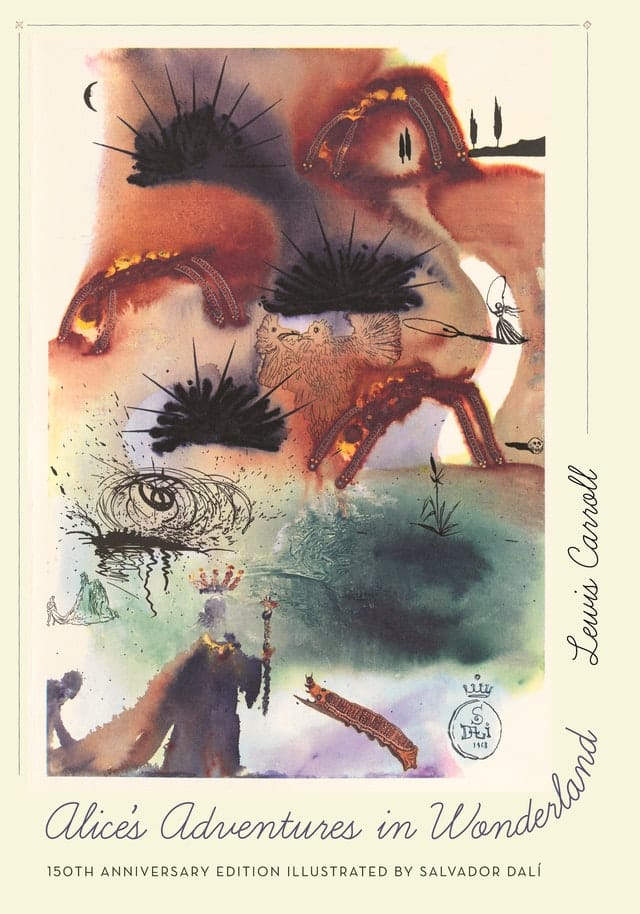“Alice’s Adventures in Wonderland,” written by Lewis Carroll, is not only a masterpiece of children’s literature but a brilliant concoction of imagination and mathematics. This novel, celebrating its 150th anniversary, reveals itself as much more than just a story of a girl in a fantastical world; it’s a math novel cleverly disguised within the whimsical narrative.
Carroll, with a background in mathematics, weaves abstract thinking and complex ideas into the very fabric of Wonderland. From the enigmatic Cheshire Cat discussing infinity, to the Queen’s croquet game reflecting the randomness of numbers, the reader—whether young or old—is subtly introduced to mathematical concepts throughout Alice’s odyssey.
This special edition is particularly remarkable as it includes Salvador Dalí’s rare and thought-provoking illustrations. His surrealistic touches are in perfect harmony with the narrative, enhancing the reader’s experience by providing a visual feast that echoes the dream-like quality of the text. The result is an extraordinary version of Alice’s tale that bridges art, literature, and science, ensuring that each page turned is a step further down the rabbit hole of curiosity.
Amid its logical conundrums and coded references to mathematics, “Alice’s Adventures in Wonderland” speaks to timeless themes such as the celebration of curiosity, the measure of bravery, and the importance of being resilient and kind. Carroll’s cleverly crafted characters—each embodying different facets of human virtue and vice—serve as guides not only in a young girl’s fantastical escapade but as moral compasses for the readers.
The narrative itself is an adventure in every sense of the word. Alice encounters bizarre and outlandish scenarios, yet they are constructed with such meticulous detail that they seem curiously logical. The world Carroll has created is one that consistently defies expectation and understanding, leading readers to question everything they thought they knew about reality.
Beneath the surface of this supposed children’s book lies a rich layer of complexity that open-minded readers can explore. The use of puns, puzzles, and paradoxes pulls readers of all ages into an exploration of logic, making “Alice’s Adventures in Wonderland” an educational read that stimulates the brain in more ways than one.
In conclusion, “Alice’s Adventures in Wonderland: 150th Anniversary Edition” offers more than just nostalgia—it offers an educational and mesmerizing trip that binds math, morality, art, and storytelling into a single volume. It is an essential addition to any child’s library and a delightful reread for adults who may find new insight within its pages. This novel, and particularly this edition with its extraordinary Dalí illustrations, is a testament to the enduring power of imagination and intellect combined.







